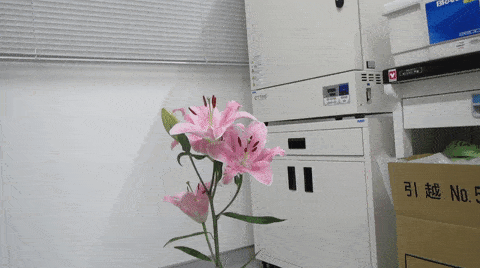To combat an environmental catastrophe waiting to happen, people have been trying to find pollinating replacement techniques for humans. Some solutions include manually pollinating flowers with a brush or using spray machines. None has proven effective until now but a solution proposed by a team from Japan looks mighty promising. They propose retrofitting tiny drones to turn them into pollinating robot insects.
90% of flowering plants and one-third of food crops depend on pollinators for reproduction
Bee colonies all over the world are threatened by a disease that might wipe them out. If bees go, the world’s food supply will seriously become jeopardized. One out of every three mouthfuls of food in the American diet is, in some way, a product of honeybee pollination—from fruit to nuts to coffee beans. In 2015 alone, 42 percent of bee colonies collapsed in the United States at the hand of a plight that’s due to a combination of factors like pesticides, climate change, loss of habitat, and pathogens carried by mites. And things aren’t getting better. Just last month, scientists proposed listing the rusty-patched bumblebee as endangered, the first wild bee in the United States to be classed as such.
Eijiro Miyako, a chemist at the National Institute of Advanced Industrial Science and Technology in Japan, was tasked with making an electrically conductive gel ten yeas ago. One clearly failed batch was as sticky as hair wax. He didn’t throw it away, though. Left away to gather dust for years, Miyako was surprised to see that his sticky gel still looked like new despite the container was open. Although this gel was useless for electrical engineering, Miyako recognized that its properties could be valuable elsewhere, as a medium for collecting pollen.

When Miyako sprinkled ants with his ionic gel, these were far more likely to gather pollen than ants who didn’t come in contact with the sticky substance. Next, he and colleagues strapped horsehairs gelled with the sticky substance on a $100-drone. The setup was meant to mimic a bee’s fuzzy body.
The researchers proved that the remote-controlled drones could pollinate Japanese lilies, as scanning electron microscope images clearly showed pollen grains attached to the drone’s surface. Drones whose horsehairs were coated with the gel gathered 10 times more pollen than hairs free of the gel, as reported in the journal Chem.
This is a very basic demonstration. Although you can automate the drones’ pollination using GPS and artificial intelligence, it’s unlikely we’ll see millions of such flying machines going from flower to flower any time soon. It would simply be impossible to replace bees. According to Joe Traynor, a “bee broker” in California, the almond industry in the state depends on 1.8 million hives and 35 billion bees to pollinate 900,000 acres of almond trees. Rather, Miyako says drone-assisted pollination could be used in those areas where bees are lacking and plant fertilization needs a nudge. “In combination is the best way,” he told the LA Times.
Biologist David Goulson from the University of Sussex in the UK wrote on his blog that research ought to be more concerned with saving the bees than ‘planning for their demise’.
“I would argue that it is exceedingly unlikely that we could ever produce something as cheap or as effective as bees themselves. Bees have been around and pollinating flowers for more than 120 million years; they have evolved to become very good at it. It is remarkable hubris to think that we can improve on that. Consider just the numbers; there are roughly 80 million honeybee hives in the world, each containing perhaps 40,000 bees through the spring and summer. That adds up to 3.2 trillion bees. They feed themselves for free, breed for free, and even give us honey as a bonus. What would the cost be of replacing them with robots?”
I would expect that cost to be incalculable. Clearly, we need to do more for bees but the fact that Colony Collapse Disorder isn’t yet fully understood doesn’t make our job any easier.







